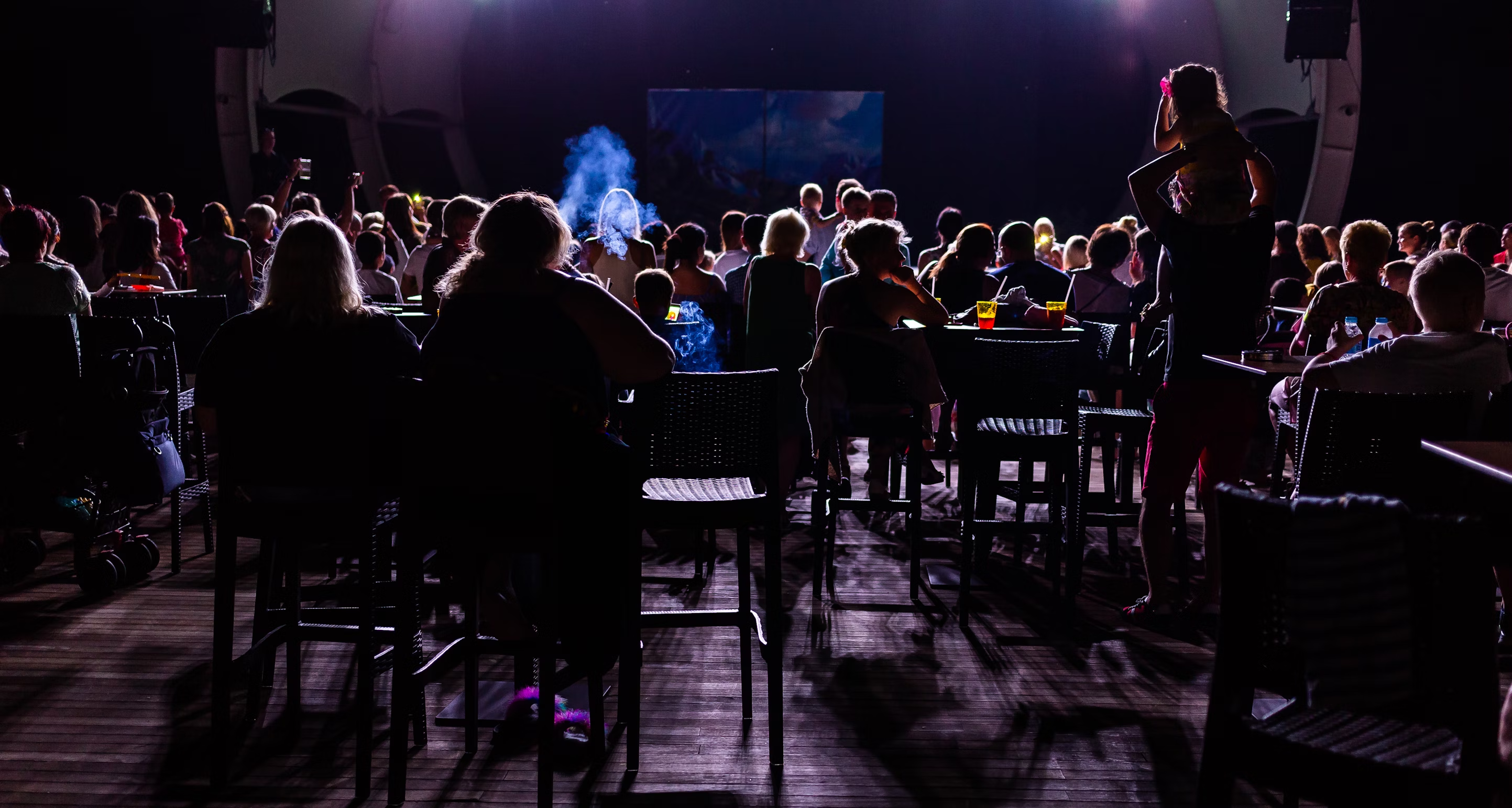The Challenge of Attracting Young Audiences
Theatre has long grappled with the challenge of engaging younger audiences. A 2019 report by the National Partnership for Culture highlighted the declining attendance among youth, with only 28% of 16-24 year olds having attended a theatre performance in the past year. This trend is driven by various factors, including the perception of theatre as an outdated art form, competition from digital entertainment options, and the high cost associated with theatre-going.
The rise of streaming services, social media, and video games has created a vast array of entertainment choices for young people, often more affordable and accessible than traditional theatre. Moreover, the theatre experience itself may be perceived as formal, rigid, and disconnected from the interests and lifestyles of younger generations. Overcoming these barriers requires a multifaceted approach that rethinks the theatre experience, leverages digital platforms, and fosters a deeper connection with youth culture.
Understanding the Younger Generation
As theatres aim to engage younger audiences, it's crucial to grasp the values, interests, and media habits that shape Millennials and Gen Z. These generations prioritize authenticity, diversity, and social consciousness. They seek experiences that resonate with their beliefs and allow them to express their individuality.
Technology plays a pivotal role in their lives, influencing how they consume media, interact with brands, and make purchasing decisions. Social media is a powerful tool for discovery and validation, with peer recommendations carrying significant weight. Younger audiences gravitate toward immersive, interactive experiences that blend digital and physical elements seamlessly.
Understanding their spending patterns is also essential. Millennials and Gen Z prioritize value and seek experiences over material possessions. They are willing to invest in experiences that align with their values and provide opportunities for self-expression and social connection.
Rethinking the Theatre Experience
The theatre landscape is rapidly evolving, and to engage younger audiences, it's crucial to rethink the traditional theatrical experience. One approach is to embrace immersive and interactive technologies that blur the line between performer and spectator. As highlighted in Viral Theatres' Pandemic Playbook, innovative theatre companies have experimented with augmented reality, virtual reality, and mixed reality to create multi-sensory experiences that transport audiences into the heart of the performance.
Moreover, the integration of digital elements, such as projection mapping, interactive installations, and real-time data visualization, can enhance the storytelling and create a more dynamic and engaging environment. Dreams, Drama, and Digital Delights explores how technology can complement and elevate traditional theatre practices, fostering a sense of wonder and curiosity in younger audiences.
Additionally, as discussed in Virtual Reality Cinema: What Can We Expect To See, the advent of virtual reality cinema opens up new possibilities for immersive storytelling, allowing audiences to step into the narrative and experience it from multiple perspectives. By embracing these innovative technologies, theatre can become a cutting-edge and captivating experience for younger generations.

Contemporary and Relevant Stories
Young audiences crave stories that resonate with their lived experiences, values, and perspectives. Programming that explores modern issues, amplifies diverse voices, and offers fresh takes on contemporary themes can captivate and engage younger theatregoers. Consider works that tackle topics like technology, social media, mental health, identity, and social justice – subjects that are deeply relevant to today's youth.
Embrace new and emerging playwrights who speak directly to the younger generation. For example, Crystal Skillman's play "Geek!" follows teenage outcasts navigating the complexities of high school life, gaming culture, and finding one's tribe. Such relatable narratives can forge powerful connections with young audiences.
Additionally, explore diverse styles and genres that break from traditional theatrical conventions. The Encyclopedia of Theatre Styles and Genres highlights innovative forms like immersive theatre, devised theatre, and multimedia performances – formats that can captivate the tech-savvy and experientially-inclined youth demographic.
Social Media Outreach and Digital Marketing
To effectively reach younger audiences, theatres must embrace digital marketing strategies and leverage the power of social media platforms frequented by this demographic. Creating shareable, engaging content that resonates with younger audiences is crucial. Behind-the-scenes glimpses, interactive experiences, and user-generated content can foster a sense of connection and encourage organic promotion through shares and word-of-mouth. Embrace platforms like TikTok, Instagram, and Snapchat, where visual storytelling and authentic narratives thrive. Incentivize sharing by offering exclusive rewards or experiences for those who actively participate in your digital campaigns.
Making It Affordable
The high cost of theatre tickets can be a significant barrier for younger audiences. To make the theatre more accessible, consider implementing discounted student tickets, package deals, and pay-what-you-can nights. Offering promotional pricing strategies, such as complementary rewards programs or paid subscriptions, can incentivize younger audiences to attend more frequently. Additionally, targeted discounts specifically for college students can be an effective way to engage this demographic. By making theatre more affordable, you can remove financial barriers and encourage younger audiences to explore and appreciate the arts.
Creating a Casual, Relaxed Atmosphere
Many younger audiences are put off by the formal and stuffy atmosphere that has traditionally surrounded theatre. To engage them, it's essential to create a more casual and relaxed vibe. Consider relaxing dress codes, allowing audiences to come as they are without strict enforcement of formal attire. Offer drinks and snacks that can be enjoyed during the performance, mimicking the casual environment of a movie theater or comedy club.
Additionally, designate pre-show and post-show mingling areas where audience members can socialize, discuss the performance, and feel part of a community. As described in the report "Beyond the Building: Performing Arts and Transforming Place" (.pdf), some theatres are activating spaces beyond their walls to create a more welcoming and engaging atmosphere.
By making the theatre experience feel more casual and relaxed, younger audiences are more likely to feel comfortable and at ease, encouraging them to return and become loyal patrons.
Diversifying Your Programming
Expanding your programming beyond traditional plays can be an effective strategy for engaging younger audiences. Consider incorporating a diverse range of genres, such as musicals, improv comedy, experimental theatre, and interdisciplinary performances that blend different art forms. Younger audiences tend to gravitate towards more immersive, interactive, and boundary-pushing experiences.
As highlighted by Theatre Eclectic, their mission is to make theatre accessible to underrepresented artists and underserved communities. By presenting eclectic and diverse programming, they aim to attract a wider range of audiences, including younger demographics.
Collaborating with local artists, musicians, and performers from different backgrounds can also help infuse fresh perspectives and innovative approaches into your programming. Los Angeles' vibrant theatre scene showcases the power of diverse programming, featuring everything from immersive experiences to site-specific performances.
Collaborating with Local Partners
Forging strategic partnerships with local schools, community organizations, and businesses can be a powerful way to engage younger audiences. By collaborating with schools, you can offer discounted tickets or workshops that introduce students to the world of theatre. Community groups focused on youth development or the arts can co-promote your productions and bring new faces into the audience. Even partnering with popular local brands on cross-promotions or sponsored events can help raise awareness among younger demographics.
As the National Theatre's Theatre Nation Partnerships program demonstrates, these collaborations strengthen ties between theatres and their surrounding communities. They also provide valuable opportunities to connect with young people where they already are.
Getting Them Involved Behind the Scenes
One powerful way to cultivate young audiences is by offering behind-the-scenes experiences that immerse them in the theatrical process. Consider apprenticeship programs that allow students to work alongside professionals in areas like stage management, lighting design, or costume construction. As evidenced by the Youth FX program's use of interviews and focus groups, this hands-on approach can provide valuable insights into what resonates with younger generations.
Additionally, hosting workshops and masterclasses led by industry experts can ignite passion and foster a deeper appreciation for the craft. For example, Kennedy Theatre at the University of Hawaii allocates modest budgets for student-driven productions, allowing aspiring artists to gain practical experience. By offering these immersive opportunities, you not only nurture the next generation of theatre professionals but also cultivate a dedicated audience invested in the art form.
The Power of Social Experiences
Creating opportunities for younger audiences to attend and discuss performances with their friends is a powerful way to engage them. Social experiences tap into the inherent desire of this age group to share memorable moments with their peers. Consider hosting special themed events that encourage group participation, such as costume parties tied to a production or interactive pre-show activities.
Offering discounted group rates can incentivize friends to attend together. You could also explore creating designated areas within the theater for groups to congregate before and after shows, fostering a communal atmosphere. By embracing the social aspect, you transform the theatrical experience into an event to be shared and discussed, deepening the connection with younger patrons.
Gamifying the Theatre Experience
Introducing game mechanics like rewards, leaderboards, and achievement badges can be an effective way to engage younger audiences and foster a sense of accomplishment and friendly competition. For example, you could offer digital badges or physical tokens for attending a certain number of shows, or for completing "quests" like seeing a play from each genre in a season. A mobile app or website could track their progress and allow them to share their achievements on social media. The key is to make the experience fun and rewarding, beyond just watching the show itself. By tapping into the motivations that make games so addictive, you can cultivate a deeper connection with younger audiences.
Post-Show Discussions and Talkbacks
Post-show discussions and talkbacks provide a powerful opportunity to deepen the audience's engagement with the production. By facilitating a dialogue between the creative team, cast, and audience members, theatres can foster a more profound appreciation and understanding of the themes, characters, and issues explored on stage.
These interactive sessions allow audiences to ask questions, share their perspectives, and even challenge or confront certain aspects of the performance. Post-show conversations can help audience members "appreciate, consider, question, and even confront the theatre they've just experienced."
By creating a safe and respectful space for audience members to interact directly with the creative team and performers, theatres can cultivate a deeper sense of connection and investment in the art form, ultimately enhancing the overall audience experience.
Cultivating Young Critics and Advocates
Empowering young people to become critics, reviewers, and advocates for theatre can foster a deeper connection and sense of ownership over the art form. Consider creating a youth critics program that provides training and opportunities for teenagers and college students to write reviews, conduct interviews, and share their perspectives on productions. Not only does this give them a voice and platform, but it also helps cultivate the next generation of theatre enthusiasts and promoters.
Additionally, you can engage young audiences by inviting them to participate in post-show discussions, talkbacks, and Q&A sessions with the creative team and cast. This allows them to share their thoughts, ask questions, and gain deeper insights into the creative process. By making them feel heard and valued, you can transform them into passionate advocates who will spread the word about your productions to their peers.
Another strategy is to collaborate with local schools, universities, and youth organizations to create educational programs, workshops, and internships focused on theatre criticism, arts journalism, and marketing. Provide mentorship opportunities and hands-on experiences that empower young people to develop their critical thinking, writing, and promotional skills in the context of theatre. [Source: How can we engage more young people in arts and culture?]
Embracing Constant Experimentation
In the 21st century, the theatre world must embrace constant experimentation to attract and retain younger audiences. Theatre today is full of paradoxes – it must simultaneously honor tradition while pushing boundaries and innovating. Trying new formats, platforms, and iterating based on feedback is crucial to staying relevant.
Experiment with immersive experiences, site-specific performances, or blending theatre with other art forms like dance, music, or digital media. Seek out non-traditional venues beyond the proscenium stage. Leverage technology to enhance storytelling, such as augmented reality, projection mapping, or interactive elements. Embrace a spirit of risk-taking and be willing to fail fast, learn, and adapt.
Actively solicit feedback from younger audiences through surveys, focus groups, or social media. Analyze what resonates and what falls flat, then iterate accordingly. Foster an organizational culture of innovation, where new ideas are encouraged and rapidly prototyped. By constantly experimenting and evolving, theatres can discover fresh ways to captivate the next generation.









